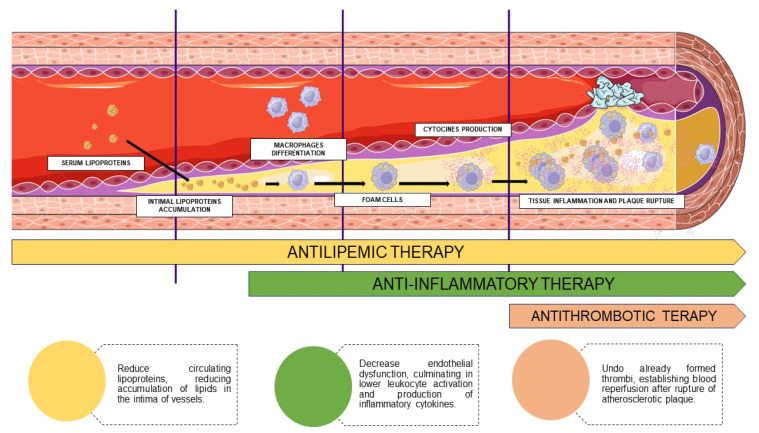Figure 1.
Pathophysiology of atherosclerosis associated with drug therapy and its stages—the formation of atheromatous plaque initially depends on the accumulation of lipids in the intima of the vessels; therefore, antilipemic therapy contributes to the reduction or cessation of this stimulus. However, after oxidation and the phagocytosis of these molecules by macrophages, an intense inflammatory cascade occurs, causing a cycle of the recruitment of inflammatory cells and the release of cytokines, culminating in tissue damage, allowing therapeutic targets to be used in anti-inflammatory therapy. Finally, when the plaque ruptures, there is the possibility of using thrombolytics to minimize the repercussions on the blood flow caused by the obstruction resulting from the consequent formation of thrombi.

